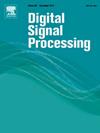Causal softmax for out-of-distribution generalization
IF 2.9
3区 工程技术
Q2 ENGINEERING, ELECTRICAL & ELECTRONIC
引用次数: 0
Abstract
Most supervised learning algorithms follow the Empirical Risk Minimization (ERM) principle, which assumes that training and test data are independently and identically distributed (IID). However, when faced with out-of-distribution (OOD) data, these models may inadvertently learn spurious correlations introduced by confounding factors in the training data. This can result in suboptimal performance on the test data, ultimately compromising the model's practical reliability. In this paper, we propose a novel causal softmax algorithm to address this challenge. First, we introduce a method to define causal and non-causal features in image classification tasks. Then, by employing a causal feature discovery module, we analyze high-level semantic activations extracted by the feature extraction network to distinguish between causal and non-causal features. Subsequently, we penalize the weights associated with non-causal features in the classifier to mitigate their influence, enabling the classifier to establish associations solely based on causal features and labels. Extensive experiments on public datasets like NICO and ImageNet-9 demonstrate the superiority of our approach.
用于分布外概括的因果软最大值
大多数监督学习算法都遵循经验风险最小化(ERM)原则,即假设训练和测试数据是独立且相同的分布(IID)。然而,当面对非分布(OOD)数据时,这些模型可能会无意中学习到训练数据中混杂因素引入的虚假相关性。这会导致测试数据的性能不理想,最终影响模型的实际可靠性。在本文中,我们提出了一种新颖的因果软最大算法来应对这一挑战。首先,我们介绍了在图像分类任务中定义因果特征和非因果特征的方法。然后,通过使用因果特征发现模块,我们分析了特征提取网络提取的高级语义激活,以区分因果和非因果特征。随后,我们对分类器中与非因果特征相关的权重进行惩罚,以减轻其影响,从而使分类器能够仅根据因果特征和标签建立关联。在 NICO 和 ImageNet-9 等公共数据集上的广泛实验证明了我们的方法的优越性。
本文章由计算机程序翻译,如有差异,请以英文原文为准。
求助全文
约1分钟内获得全文
求助全文
来源期刊

Digital Signal Processing
工程技术-工程:电子与电气
CiteScore
5.30
自引率
17.20%
发文量
435
审稿时长
66 days
期刊介绍:
Digital Signal Processing: A Review Journal is one of the oldest and most established journals in the field of signal processing yet it aims to be the most innovative. The Journal invites top quality research articles at the frontiers of research in all aspects of signal processing. Our objective is to provide a platform for the publication of ground-breaking research in signal processing with both academic and industrial appeal.
The journal has a special emphasis on statistical signal processing methodology such as Bayesian signal processing, and encourages articles on emerging applications of signal processing such as:
• big data• machine learning• internet of things• information security• systems biology and computational biology,• financial time series analysis,• autonomous vehicles,• quantum computing,• neuromorphic engineering,• human-computer interaction and intelligent user interfaces,• environmental signal processing,• geophysical signal processing including seismic signal processing,• chemioinformatics and bioinformatics,• audio, visual and performance arts,• disaster management and prevention,• renewable energy,
 求助内容:
求助内容: 应助结果提醒方式:
应助结果提醒方式:


